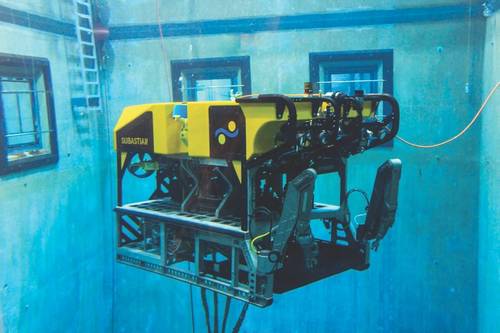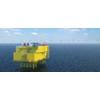Advanced operational, informational and technical support is essential to the success of ocean science. Schmidt Ocean Institute (SOI) was established as a 501(c)(3) private nonprofit operating foundation in 2009 to raise the standards of critical seagoing research infrastructure and provide more ocean access to scientists and engineers. SOI seeks to work with the best innovators to accelerate the pace of ocean science aboard its global research platform, R/V Falkor. SOI’s research expeditions return unprecedented amounts of open-access data, which it openly shares with the public. SOI has completed more than 32 research cruises that have resulted in many discoveries including the third deepest hydrothermal vent, the world’s deepest fish and several new underwater seamounts. In five years, R/V Falkor’s advanced multibeam system has mapped over 400,000 km² of ocean floor, an area larger than most European countries. Research onboard Falkor has also focused on poorly understood areas such as the Mariana Trench Back-Arc. As a result of the cruises conducted, over 72 publications have been produced since 2013 and more than 3,000 individuals have been reached through virtual classroom connections as part of SOI’s Ship-to-Shore Program. Engaging students from around the world has been an exciting part of Falkor’s mission, providing opportunities to see what the practice of ocean science looks like from on board, in the classroom or online.
SOI showcases breakthrough ocean research made possible with advanced technologies, such as marine robotics, high performance computing, telepresence and broadband ship-shore connections. The abilities it has developed give SOI the chance to accelerate scientific understanding of ocean systems, and increase public awareness. This is demonstrated by the high definition video provided by SOI from ROV dives in remote areas. In March, scientists used new imaging equipment to reconstruct a hydrothermal vent site in 3D with virtual reality technology. The ROV dives that take place off of Falkor are made available in YouTube, adding to SOI’s video collection that has received more than 11,000 viewers. SOI is working to revolutionize how visual data is stored and shared with the development of a new open-source data annotation program. Working with such advanced computing systems, there is a need for large storage. R/V Falkor can now house up to 1.1 petabytes of information with our high performance computing system.
Committed to continuous innovation of shipboard scientific systems, SOI this year has completed its first underwater 4,500 m capable remotely operated vehicle (ROV), SuBastian. The ROV’s imaging system includes cience cameras, capable of both 4K video and 20 megapixel still images. The ROV SuBastian will be integrated with the ship and tested in waters off of Guam this summer. R/V Falkor is the only research vessel with a high performance computing system made freely available to scientists to run complex oceanographic numeric models to inform field observations and test hypothesis while research cruises are in progress. Thus far the computer has supported four separate cruises modeling 3D reef and vent systems. R/V Falkor’s adaptable system has also allowed for scientist to create on-board laboratories. Earlier this year a science team implemented the first large-scale deployment of a new protein biomarker technology. The “targeted metaproteomics” approach will be used to diagnose marine microbial populations and their interaction with ocean chemistry. Additionally, R/V Falkor is used as a testing platform for engineering of new vehicles and robotics. Last year, SOI hosted its first coordinated robotics cruise with seven underwater vehicles deployed simultaneously.
555 Bryant Street, #374, Palo Alto, CA 94301
Phone: (650) 681-8460
Fax: (415) 975-4081
http://schmidtocean.org
CEO/President: Eric Schmidt
Number of Employees: 76
Vice President: Wendy Schmidt














 December 2025
December 2025



